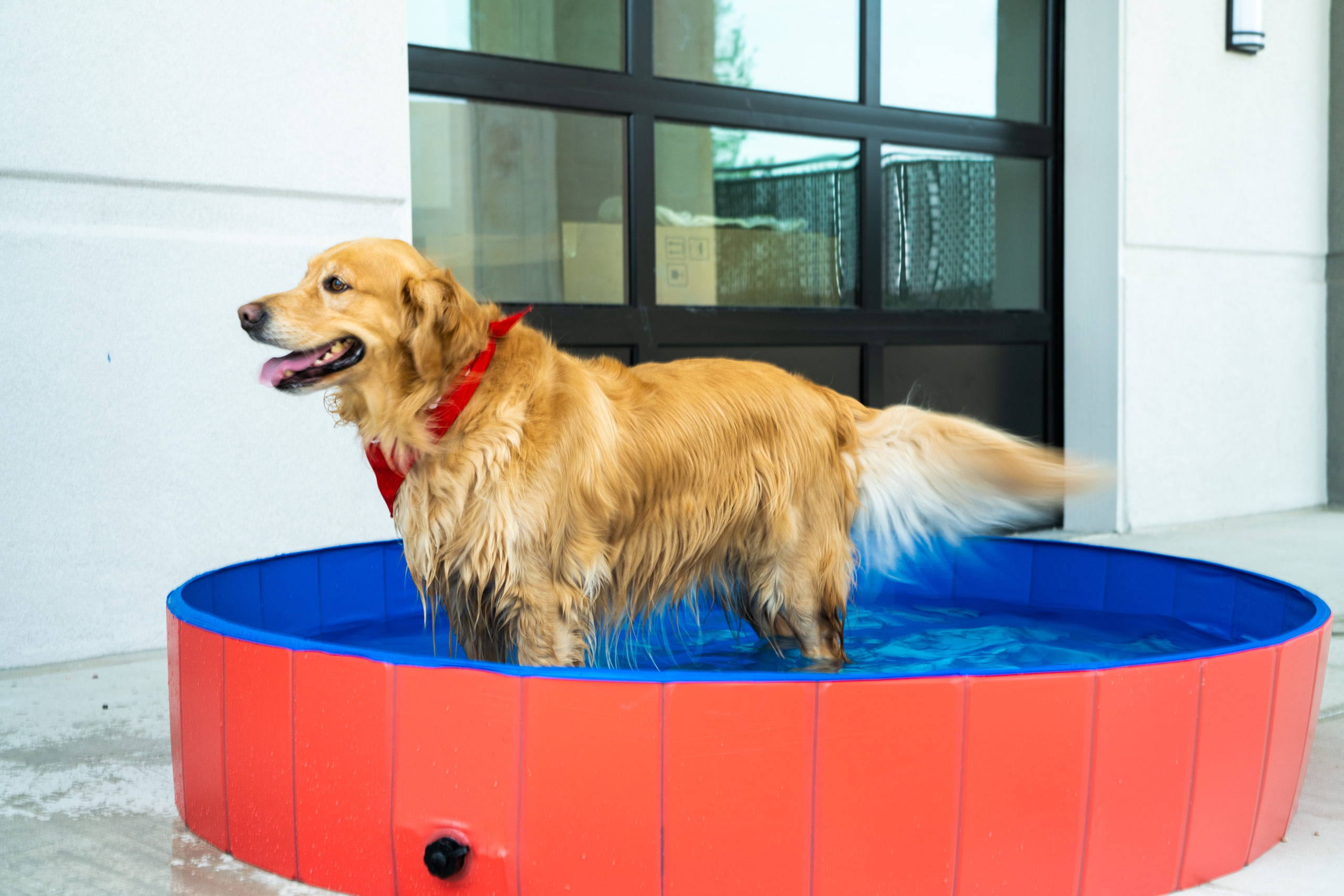1.5 min read

Watch your pet for signs of overheating when outdoors. If you notice them staggering, becoming weak, or collapsing, contact us at once.
Act fast to lower your pet’s body temperature.
Rush your pet to our veterinary hospital. A veterinary visit is crucial during and after heat exhaustion or heatstroke.
No matter how well you cooled your pet at home, hidden organ damage or other issues can occur. Our hospital can evaluate your pet and form a treatment plan. If the situation is critical, your pet could need monitoring, IV fluids, or other treatments.
Other steps if you can’t get to us fast:
Step 1: Bring your pet into the air-conditioning. Take them to the coolest place that you can find nearby.
Step 2: Run a cool—not cold—bath. If your pet is in and out of consciousness, make sure their head stays above water. Run cool water over your pet to reduce their body temperature through evaporation.
Step 3: Point a high-powered fan at your pet. Proper ventilation will further cool them.
Step 4: Check your pet’s temperature every 5 minutes. Once they reach 103 degrees, stop the cooling process. If you continue until they reach 100-102 degrees, your pet can become too cool and get hypothermia.
Things to avoid:
-Cold water is dangerous because it raises (instead of lowers) their body temperature.
-Wrapping them in wet towels will trap the heat around their body.
Have our number handy if there is a heat emergency. Once your pet suffers from one heat exhaustion episode, they are more at risk for future heat-related issues.
